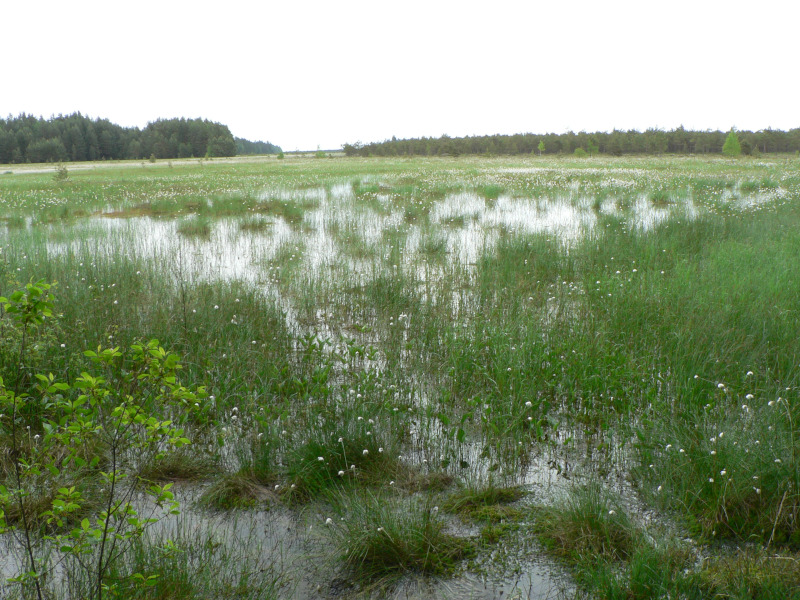
Čepkeliai Marsh Facts
- This beautiful creation of time and natural processes most frequently goes by the somewhat hard to pronounce english term of Čepkeliai Marsh. Within the country in which it formed, though, it’s known by a very similar name. That’s the equally short title of Čepkelių raistas.
- This wonder of geology has been known to the local population for centuries due to its significant size and ecological value. However, there isn’t a specific individual credited with its discovery in the sense that many natural features are discovered by explorers or scientists.
- The remarkable formation first gained major scientific attention and formal recognition in the 20th century. It subsequently became particularly notable for local conservation efforts in the mid-20th century. Thankfully, those struggles remain ongoing today in multiple forms.
- In fact, these activities thankfully later lead to its designation as a nature reserve in 1975. The recognition and protection efforts involved various ecologists and conservationists from the region who continue to study the area’s great biodiversity and ecological importance.
- The stunning Čepkeliai Marsh also constitutes part of a Ramsar Site that actually crosses several national borders in the region. Officials established this particular one in 2010. This status provides the stunning area with a certain degree of protections from mans depredations.
Related Articles
Čepkeliai Marsh Physical Description
The incredible Čepkeliai Marsh fully earns the numerous accolades it often receives from its visitors. The site does so not just for its amazing natural beauty, though. That’s because Nature and time also blessed this work of multiple processes with truly impressive physical dimensions, as well.
Understandably, this intriguing feature possesses an extremely and variable irregular outline. In total, though, it covers an area measuring approximately 27,700 acres (11,200 ha). This also happens to make the wonder the largest known marsh of its kind in the country in which it formed.
The overall terrain of this visually captivating swamp never fails to amaze the viewer. That’s true since the formation remains predominantly flat, with only very slight undulations occuring in widely scattered locations. The central part of the marsh, however, does indeed consist of a raised bog.
Yet, the peripheries of Čepkeliai Marsh merit attention as well, for they also include other related features. These include such attributes as numerous transitional mires and fens. Several small flooded forests also appear in this same portion of the outskirts of the unique natural construction.
Not content to simply stop there, however, Nature and its many processes also provided it with even more amazing wonders to appeal to the human sightseer. The expansive bog also features numerous small lakes and ponds, particularly situated in the central and northern parts.
Čepkeliai Marsh Location, Formation, and Ecology
The justifiably attention-grabbing Čepkeliai Marsh formed in a region of the globe already renowned for its remarkable abundance of natural wonders. That location therefore won’t surprise many of our readers. Nature created this highly unique site as part of the beautiful continent of Europe.
There, though, the extensive marsh formed in a relatively remote northern area on the landmass. It also resides within the national borders of the country of Lithuania. Its precise location places it in the Varėna District Municipality, south of Marcinkonys village, north of the Kotra River.
Like many other large peat bogs, this natural beauty formed due to multiple quite complex geological and ecological processes. These also took place over thousands of years. In its case, these appear quite closely connected to the last glacial period, which ended around 10,000 years ago.
The comparatively low-lying depressions left by recent glacial activity began to accumulate water from precipitation, surface runoff, and groundwater inflows. Poor drainage conditions in these areas also favored waterlogging, subsequently leading to the formation of the amazing wetlands.
The formative process continued as particularly waterlogged conditions resulted in low oxygen levels in the soil. This had the effect of greatly slowing down the decomposition of large amounts of organic matter. This led to the accumulation of partially decomposed plant material, or peat.
The initial stages of marsh development additionally most likely involved the eventual growth of what’s known to science as pioneer aquatic plants and grasses. As organic material accumulated, the region eventually transitioned into a fen, strongly characterized by nutrient-rich conditions.
Over spans of time, the continued accumulation of plant material and the lack of decomposition due to anaerobic conditions inexorably led to the formation of peat. Sphagnum mosses, which hold large amounts of water, began to dominate, creating the acidic conditions typical of bogs.
As countless layers of this peat accumulated, the surface of the wetland slowly became elevated above the surrounding water table, leading to the formation of a raised bog. This stage was marked by the dominance of sphagnum mosses, dwarf shrubs, and other bog-specific vegetation.
Despite its seeming harshness, however, the breathtaking Čepkeliai Marsh hosts a clearly thriving ecosystem. The plants in here adapted to the acidic, nutrient-poor conditions of the bog. Species like sundew and cranberry thrive in these conditions. Heather also appears in large quantities.
Due to these environmental conditions, many varieties of animals also make their home within its boundaries. This includes numerous avians, such as cranes, white-tailed eagles, black grouses, and heather cocks. Several types of mammals, such as mountain hares and martens favor it, too.
Features Sharing Its Region
Check out our other articles on 5 Yosemite Valley Mammals, Aye-aye, Kaihalulu Beach, Common Water Hyacinth, Lesser Purple Emperor, Eurasian Griffin Vulture, Orinoco Crocodile
